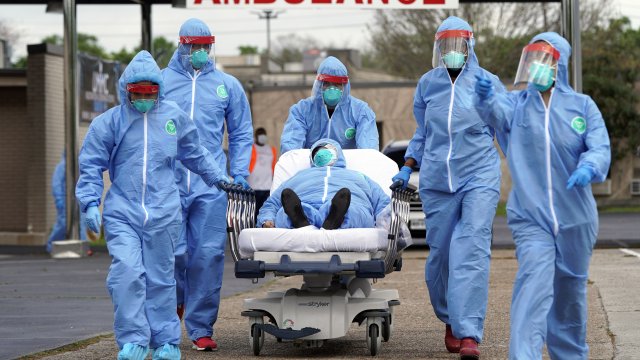Congress has passed two coronavirus aid packages and yet, there still may be a ways to go to help Americans get through this pandemic. But what's been done so far?
The first bill, signed into law less than three weeks ago, provided $8.3 billion in emergency funding, mostly to federal agencies combating the virus. The bulk of the money went to the Department of Health and Human Services and the State Department as the world tries to stop the virus' spread. Most notably, $3 billion was allocated for vaccine research including $61 million going directly to the Food & Drug Administration. The CDC will get more than two billion to in part distribute to state, local and tribal governments for their responses. Those dollars will help pay for medical supplies, testing and preparedness. Medicare providers are being handed an additional $500 million to bolster their telehealth services for the elderly.
The second bill was targeted at Americans who may be out of work during this crisis. President Trump signed it into law Wednesday night. The multi-billion dollar package includes money for free widespread testing, nutrition assistance, health services, paid leave and expanded unemployment insurance.
At least one billion dollars is earmarked for those who have trouble affording food, half a billion for food to low income pregnant women or mothers with young children and $400 million for local food banks. The Department of Agriculture will provide emergency assistance to households with children who typically get free and reduced meals at school. Any waiting period, work or work training requirements for the Supplemental Nutrition Assistance Program, known as SNAP, will also be disregarded during this time.-
Employers will provide partial paid leave to companies with fewer than 500 employees, but only after employees have taken 10 days of unpaid or accrued leave. Employees must be paid at lead two thirds of what they normally earn, but not if it's more than $200 per day. Americans can only qualify for this leave if they are unable to work or telework because they must care for a child.
Sick leave is a different story. In general, companies with fewer than 500 employees must grant paid sick time if employees are quarantined, catch the virus or must care for someone who is sick. Full-time employees will get two weeks; part timers will get whatever their average work hours would be over two weeks.
If you work for a company with 50 employees or fewer, you may not qualify. The Department of Labor could exempt small businesses that could go out of business if forced to provide leave.
A third package is still being negotiated. It could include $300 billion for small businesses, billions for big businesses and potentially even checks to individual Americans. The Trump administration says the price tag may top $1 trillion. Democrats have drafted their own packages, and some Republicans aren't on board with the administration's asks. As these packages become more complex, they become more political, and that means getting them passed, and helping the people and companies that are struggling, may become more difficult.


